Ask Ethan: How Do We Know Space Is Expanding?
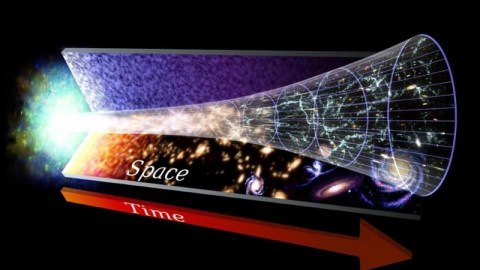
The Universe may defy our intuition, but that’s what science is for!
If you take a look out at the Universe, and in every direction you look, you see objects rushing away from you, what would you conclude? Would it be that you’re a repellant, somehow? That the fabric of space itself is expanding? That you’re at the center of an earlier explosion, and everything else is just speeding away from the explosion point? These, as well as other options, might all seem reasonable, but somehow, scientists always say “the Universe is expanding” as though no other alternative would do. Why is that? Our reader Buck wants to know, asking:
How do we know space is expanding? In relation to what? Red shifting galaxies growing farther apart could be doing so in infinite space as opposed to expanding space.
Believe it or not, the answer is written on the face of the Universe itself.
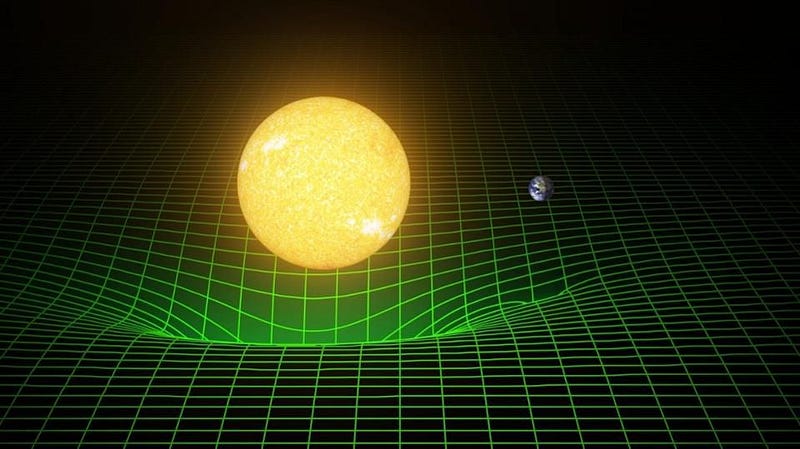
One of the most incredible facts about Einstein’s General Relativity — our leading theory of gravity — is that it lays out the relationship between spacetime, on one hand, and matter and energy, on the other. Matter and energy tell spacetime how to curve; spacetime tells matter how to move. If we know how all the matter and energy in the Universe is distributed at any instant in time, and we also know how that matter and energy are moving, we can reconstruct how spacetime is curving and evolving over the Universe’s history.
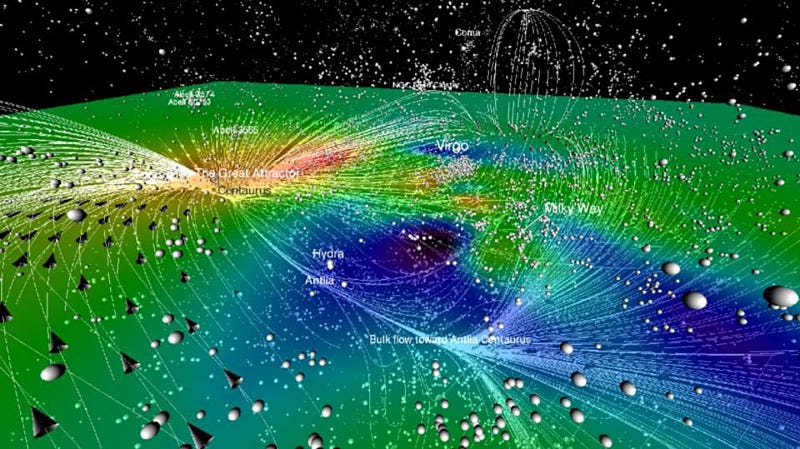
When we take a look out at the galaxies in our Universe, the very nearby ones are dominated by the gravitational dynamics of other nearby galaxies. The Milky Way and Andromeda are headed towards each other; the other galaxies in the local group will eventually merge with us as well. Outside of that, galaxies are pulled towards the other nearby masses like large galaxies and groups and clusters of galaxies. In any relatively small region of space, a few million or tens of millions of light years in size, the masses in that space determine, overall, how the galaxies are going to move.
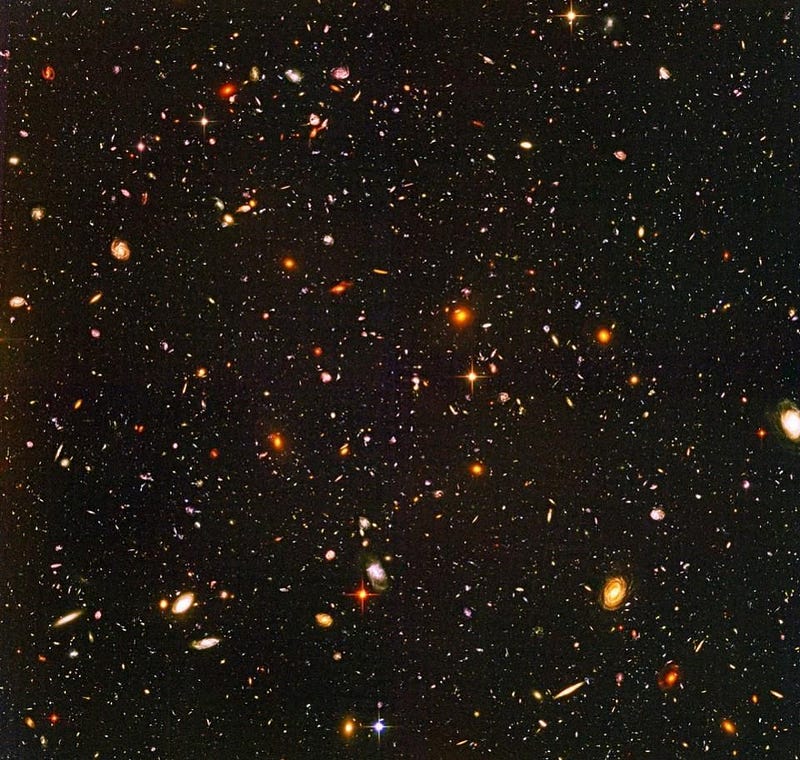
But on larger scales, we see a different effect.These small-scale motions, known as peculiar velocities, can cause speeds that rise up to a few thousand kilometers-per-second. But they’re superimposed atop a larger effect that you can only see when you start looking at much larger scales: the fact that the farther away a galaxy is from us, the faster it appears to recede away from us.
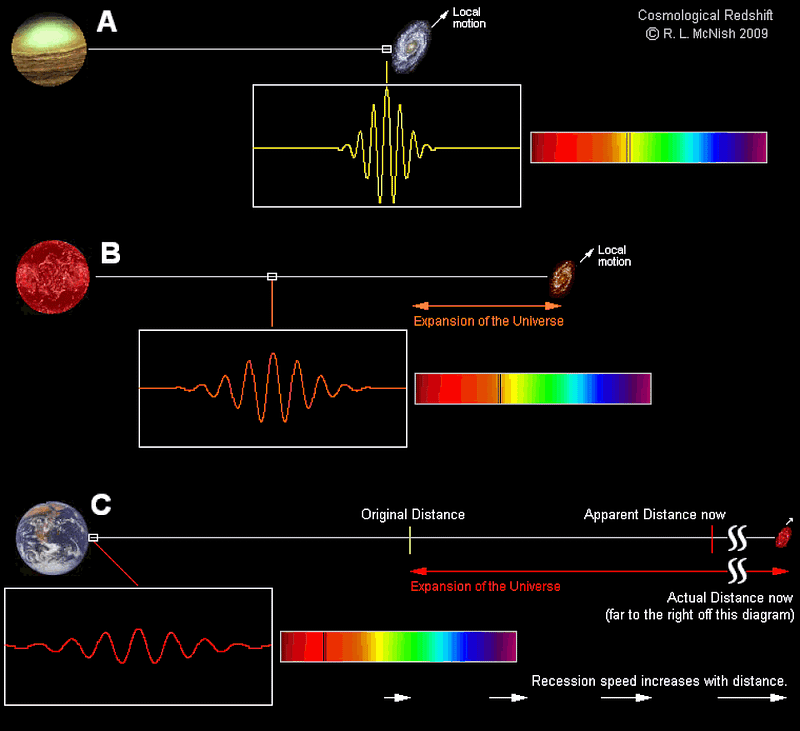
This empirical observation is known as Hubble’s Law, and simply states that the apparent recession speed of a galaxy is proportional to its distance from us. The constant-of-proportionality is known as Hubble’s constant, and has been measured very precisely to be around 70 km/s/Mpc, with an uncertainty of around 3–4 km/s/Mpc, depending on how you measure it.
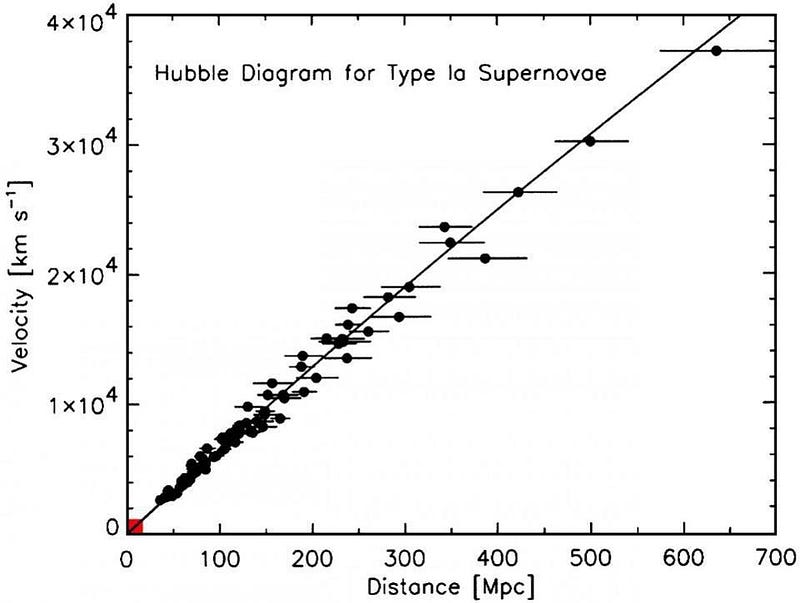
But why is this happening? Why is everything moving apart from everything else, as long as they’re gravitationally unbound? Let’s go back to the foundations of General Relativity, all the way back to a realization Einstein had before ever publishing his most powerful idea.
When Einstein put forth his general theory of relativity, he swiftly recognized that there was a consequence he was unhappy about: a Universe that was filled with matter in all directions would be unstable against gravitational collapse. Einstein’s fix for this was to make up an invisible, outward-pushing force that prevented this collapse from occurring, a cosmological constant. But if you didn’t include this cosmological constant, others soon realized, you’d wind up with a Universe that wasn’t static in time, but where the fabric of space itself was either expanding or contracting with time.
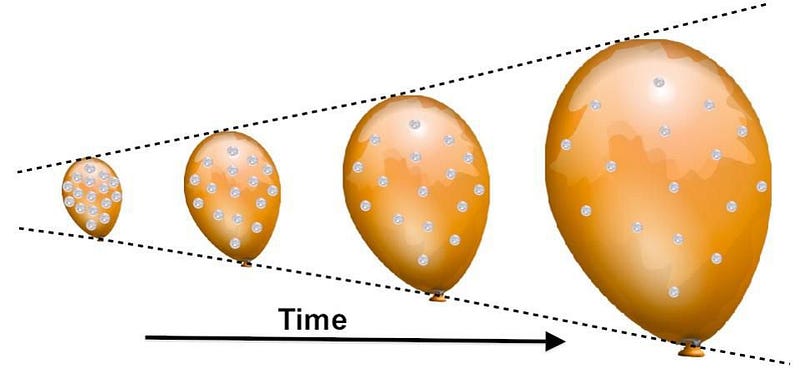
Even at that, Einstein’s fix was no good. His cosmological constant led to an unstable Universe: some overdense pockets would collapse, while the underdense ones would recede in a runaway fashion. A Universe obeying the laws of General Relativity cannot simply have a static spacetime so long as it’s full of matter. When we look out at ours, we see that it appears both homogeneousand isotropic. These two properties are so important, because they tell us two important things:
- Homogeneous means that the Universe is the same everywhere in space.
- Isotropic means that the Universe is the same in all directions.
Combined, they tell us that the Universe has an even distribution of matter/energy in it, no matter where you go or what direction you look in. That, combined with the fact that distant galaxies appear to recede more swiftly the farther they are from us, leave very few options as far as an explanation goes.
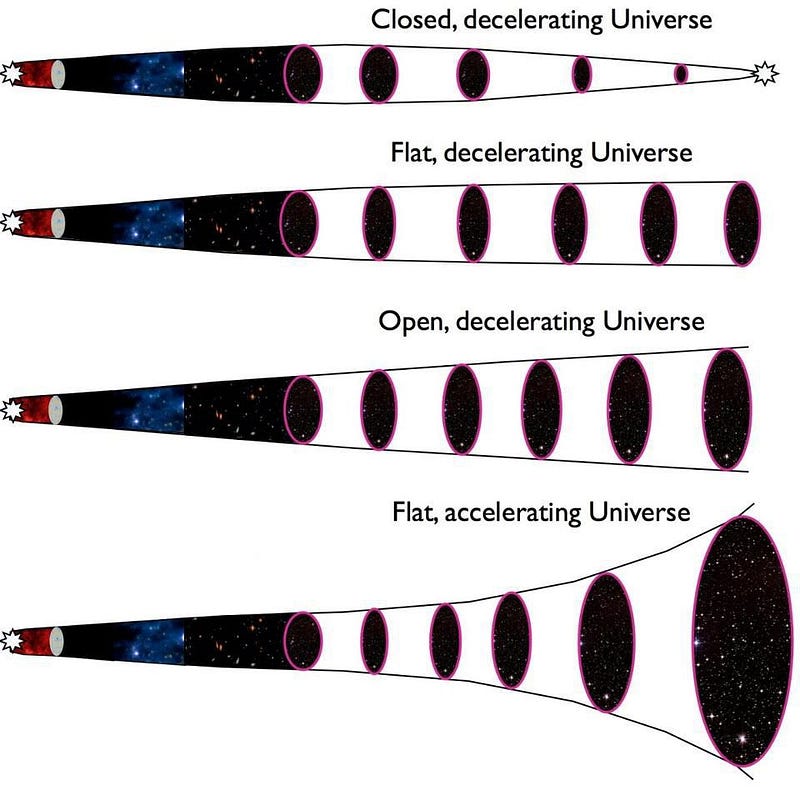
While this could have been due to a number of factors, including:
- The light from these distant galaxies getting “tired” and losing energy as they travel through space,
- A rapid motion, where the faster-moving galaxies wind up farther away over time,
- An initial explosion, which pushes some galaxies farther away from us by the present,
- Or the fabric of space itself expanding,
only the last option was validated by the full suite of data supporting both the general theory of relativity and the astrophysical distribution and properties of all the galaxies observed.
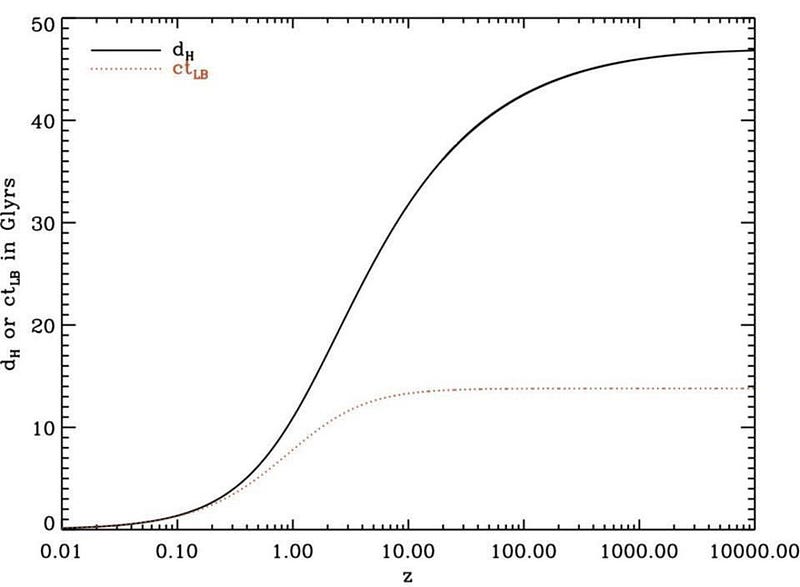
It became apparent very quickly — as early as the 1930s — that there are no two ways about it: the Universe is, in fact, expanding. The fact that the redshift of an object matched up to the distance relation and the observed expansion rate as well as it did, no matter how far away an object was, helped confirm that.
But there’s even more evidence than that. If the Universe were actually expanding, there would be a number of things we could expect to see. We’d see that the farther we looked into the distant past, the denser the matter in the Universe would appear. We’d see that galaxies were clustered closer together than they are today. We’d see that the spectrum of light from blackbody objects remained blackbody, rather than shifted in energy. And we’d see that the Cosmic Microwave Background radiation was at a higher temperature back then than the 2.7 K it is today.
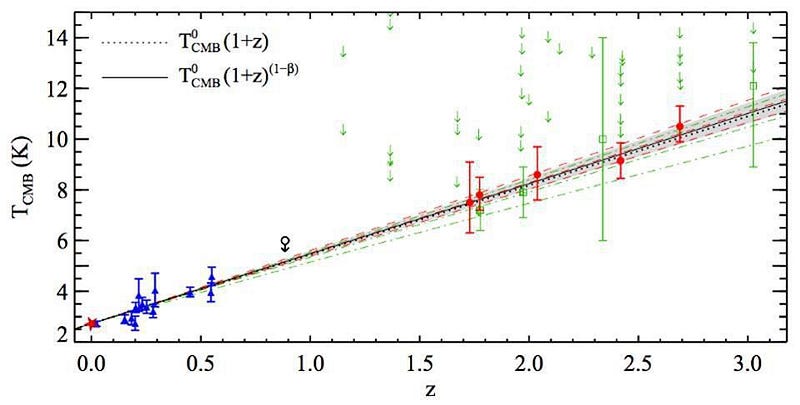
All of these pieces of evidence line up, teaching us that the Universe is expanding, and that’s the cause of the apparent recession, rather than any other explanation. It isn’t motion; it isn’t tired light; it isn’t the result of an explosion. Space itself is expanding, and the part of our Universe that we can see and access is getting larger and larger all the time. Even though it’s only 13.8 billion years since the Big Bang occurred, the most distant light arriving at our eyes today is located 46 billion light years from us right now.
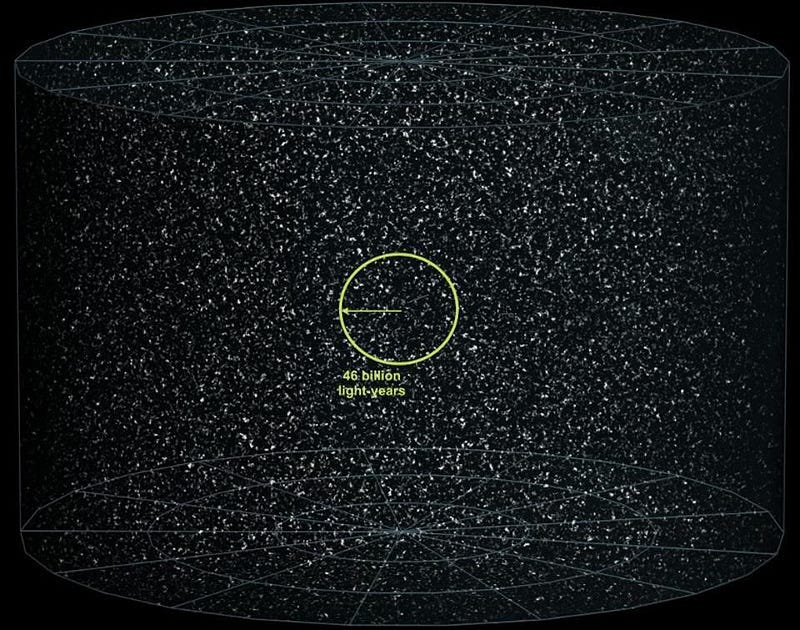
What lies beyond that? We’re almost certain there’s more “Universe” out there, but it’s simply that light hasn’t had enough time to travel to our eyes just yet. The unobservable Universe, beyond what we can observe, may be finite or infinite; we simply don’t know. But even if it’s already infinite, it can still expand! As the Universe expands, you’re simply multiplying its size by a “growth factor,” so if it starts off finite, it’s still finite (but larger), and if it starts out infinite, it’s still infinite. And if your curiosity takes you farther, you might enjoy learning what the Universe is expanding into or 5 other questions about the expanding Universe. We’re certain the Universe is changing, expanding, and stretching over time, as the effects are consistent and undeniable. But what lies beyond the Universe we can presently observe? We’re still working to find out. As always, there’s more science to be done!
Submit your Ask Ethan questions to startswithabang at gmail dot com!
Ethan Siegel is the author of Beyond the Galaxy and Treknology. You can pre-order his third book, currently in development: the Encyclopaedia Cosmologica.




